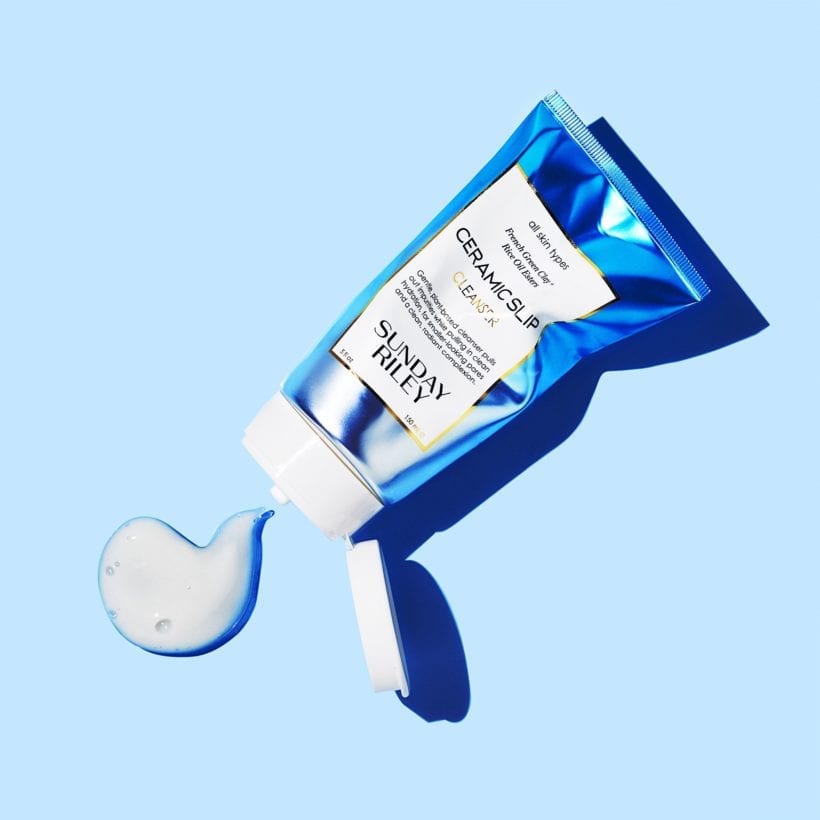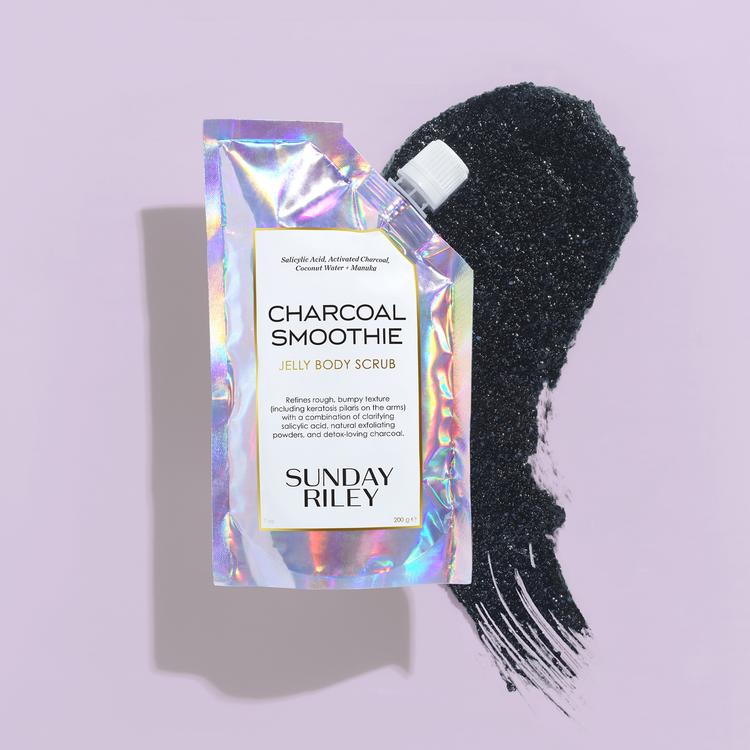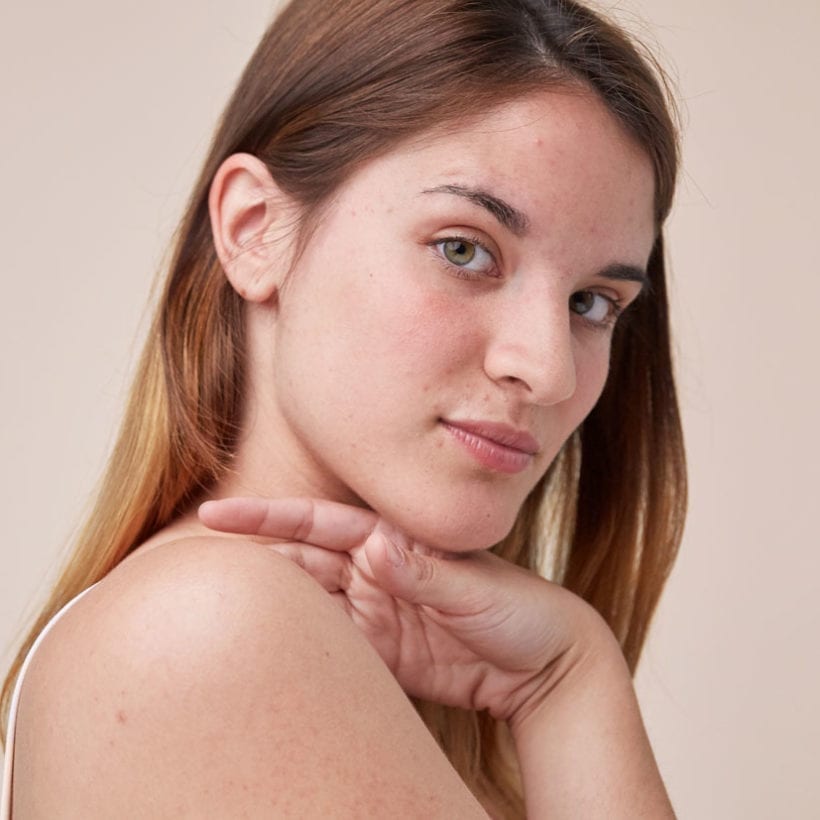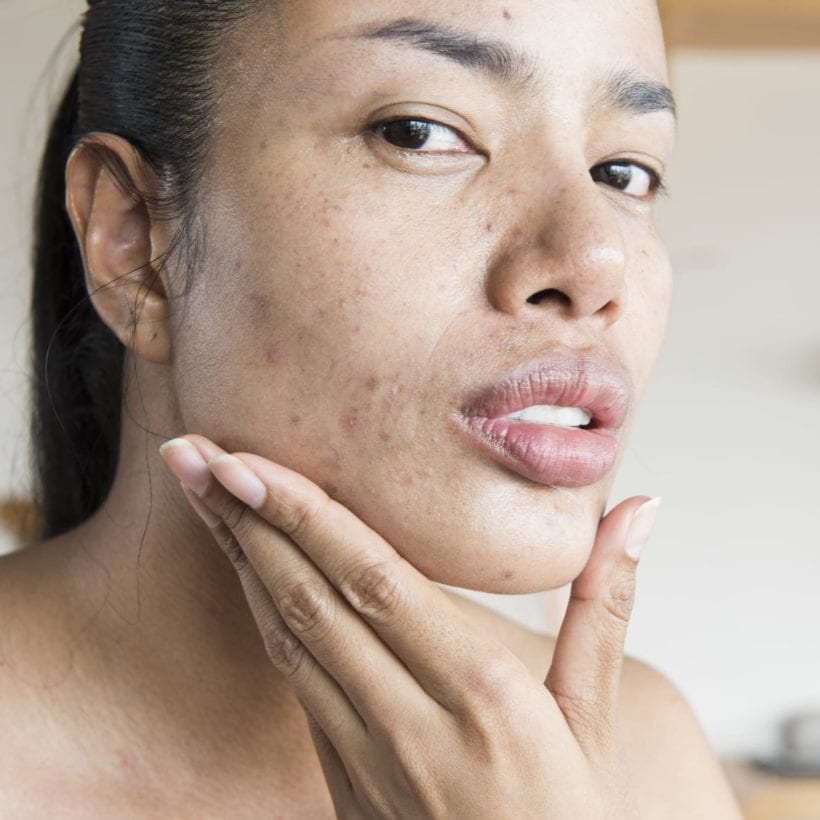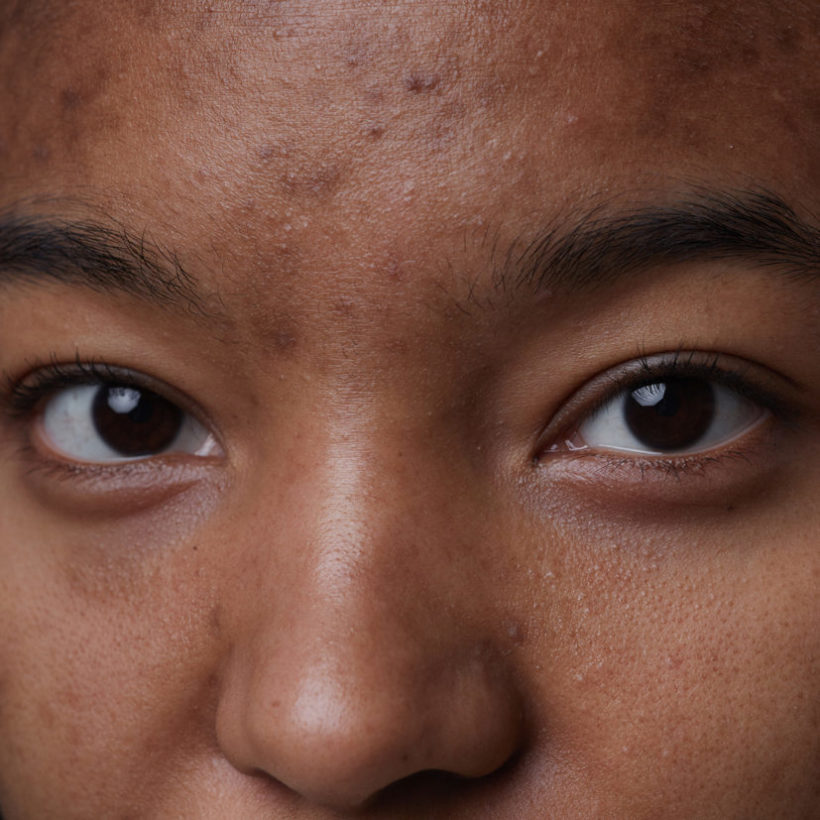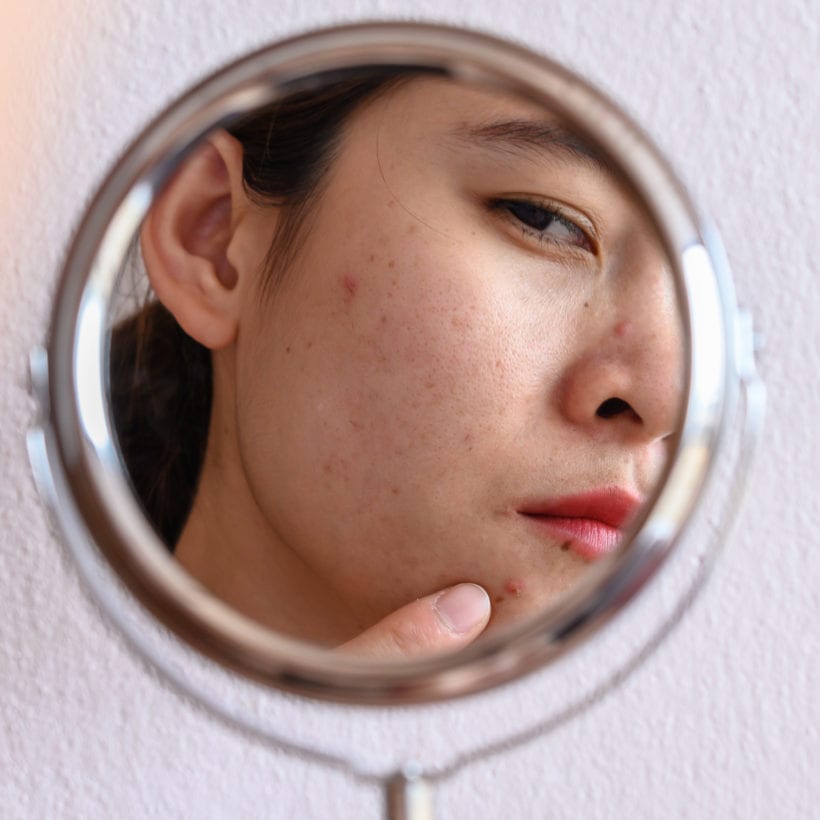As if acne couldn’t be any more vexing, enter the acne impersonator: fungal acne. Despite the name, it’s not even true acne at all. “Rather, it’s folliculitis, which is the inflammation of the follicle, caused by yeast under certain conditions that normally resides on our skin,” says Dr. Elliot Love, board-certified dermatologist of the Dermatology Group of the Carolinas. In the derm world, you might hear your doctor refer to fungal acne with its more technical term, pityrosporum (pronounced “pit-e-o-sporum”) folliculitis. If you’re struggling to figure out why your acne isn’t responding to your regular acne treatments, find out below if it could be fungal acne that’s causing zit-like bumps — plus, what to do about it.
Under what conditions does fungal acne grow?
In typical circumstances, your skin is home to a natural balance of fungus as well as good bacteria. If something depletes the good bacteria on your skin (for instance, if you take antibiotics when you’re sick), there could be an excess of fungus that turns into fungal acne. Our lifestyle can be another reason why fungal acne can develop: “The most common conditions predisposing people to pityrosporum folliculitis include living in hot or humid climates, excessive sweating, and immunosuppression. Fungal acne grows in a lipophilic environment, which means it also likes oily skin,” says Love. You can be particularly prone to fungal acne if you have a habit of wearing sweat-soaked workout clothes for a long time, or you rewear dirty workout outfits — even if they’ve dried out in-between wears.

What are the distinguishing factors between bacterial acne and fungal acne?
Although they can look very similar to one another, there are ways to tell the difference: “With fungal acne, there will be the absence of open and closed comedones, which are also known as blackheads and whiteheads. The comedone is filled with dead skin cells, oils, and bacteria. Although it is a clinical diagnosis, a skin scraping may reveal the yeast under the microscope,” says Love. While regular blackheads and whiteheads typically appear as different sizes and mostly occur around your face, fungal acne will appear as red bumps that look similar in size and will more likely appear on your chest, upper back, shoulders, or your upper limbs (though they can also pop up around your forehead, chin, and neck as well). Notably, they’ll also be itchy, according to Love. A silver lining with fungal acne is that “once pityrosporum folliculitis clears, it does not cause scarring, whereas, with acne vulgaris, aggressive treatment is sometimes necessary to reduce the risk of scarring,” says Love.

What can you do to clear up and prevent fungal acne?

Again, don’t let the word “acne” in fungal acne fool you — your go-to treatments for bacterial acne won’t work on fungus. “The treatment is very different because you are treating the yeast, rather than an antibacterial treatment aimed at keeping the hair follicles from getting plugged,” says Love.
You can start by making sure not to lounge around in sweaty clothes, wearing loose clothing, bathing after a workout, and laundering your clothes after you’ve sweated in them. If you seem to have a more mild case of fungal acne, “there are a variety of treatment options including over-the-counter shampoos containing selenium sulfides like Head and Shoulders,” says Love. Although they’re labeled as dandruff shampoo, selenium sulfide appears to work on the body as well because it has antifungal properties, according to Love. For more serious cases of fungal acne, “prescription solutions and creams such as econazole and ketoconazole, and in certain cases an oral antifungal medication can be taken,” he says. If you suspect a case of fungal acne, it’s best to chat with your dermatologist before changing up your routine to make sure it’s the best route.
We only recommend products we have independently researched, tested, and loved. If you purchase a product found through our links, Sunday Edit may earn an affiliate commission.

